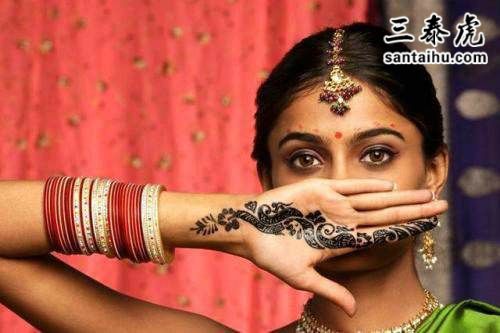Prakash Kunder, Manager - Administration
People from south Deccan (Karnataka, Andra Pradesh etc.) have same facial structure & skin colour as people from north Deccan & Gangetic Plain (Maharashtra & UP, Bihar etc.). People from Indus Plain (Gujarati, Punjabi & Kashmiri etc.) have different facial structure & skin colour & People from Tamilakan (Tamil Nadu, Kerala etc.) have different facial structure & skin colour than south-north Deccan & Gangetic plain.
南德干人(卡纳塔克邦、安得拉邦等)的面部结构和肤色与北德干和恒河平原(马哈拉施特拉邦和北方邦、比哈尔邦等)的人一样。来自印度河平原(古吉拉特、旁遮普和克什米尔等)的人有着不同的面部结构和肤色,来自泰米尔那丹(泰米尔纳德邦、喀拉拉邦等)的人有着不同于南-北德干和恒河平原人的面部结构和肤色。
facial structure & skin colour wise groups:
面部结构和皮肤颜色分组:
1.Tamilakan
2.South-North Deccan + Gangetic Plain
3.Indus Plain
4.Himalayan
5.North East.
6.Tribal
1。泰米尔那丹
2。南德干+恒河平原
3。印度河平原
4。喜马拉雅
5。北东。
6。部落
Though indians have various facial structure & skin colour, Indians are of mixture of races like Indo-Aryan, Irano-Aryan, Indo-Dravidian, Tibo-Burman, Austro-Asiatic, Austronation, Pre Mongoloid Tibian, early Australoid, early Mongoloid, early Congoid, early Capeoid, early Nileoid, early Negritos, early Indo-European, later Indo-European, later Mongoloid, later Congoid, Siddis, Arabs, Turks etc.
虽然印度人的面部结构和肤色各不相同,但印度人的种族是多种多样的,比如印度-雅利安人、伊朗-雅利安人、印度-德拉维人、藏缅-伯尔曼人、澳大利亚土著-南亚人、澳大利亚土著人、蒙古-藏缅人、早期澳大利亚土著人、早期蒙古人、早期黑人、早期尼格利陀人、早期印度-欧洲人,后期印度-欧洲人、后期蒙古人、阿拉伯人、土耳其人等。
Akalank Jayakumar, Top Writer '16, '17, '18 | Economics UG
Indians do not belong to one particular race.
There were migrations, invasions and massive inter-marriage between huge portions of the populations that today, it is not easy to differentiate between someone who is, say, a Marathi and someone who is a Tamil.
印度人不属于一个特定的种族。
在人口众多的人群中,存在着移民、入侵和大规模的通婚。如今,很难辨认一个人是泰米尔人,还是马拉地人。
The term race denotes different meanings to different people. Some think that if two people look similar, they belong to the same race. Some think that if two people speak the same mother tongue, they belong to the same race. However, in the most recent times, as far as I understand the word, “race” denotes a population having the same genetic construct.
种族这个词对不同的人有不同的含义。有些人认为如果两个人看起来相似,他们属于同一个种族。有些人认为如果两个人说同一种母语,他们就属于同一种族。然而,就我所知,根据最新咨询,“种族”指的是拥有相同基因结构的群体。
And this is where the discussion stops —as you can no longer carry on unless you are a geneticist, and unless there has been wide research on this field that is internationally acclaimed.
这就是讨论的终点——除非你是一个遗传学家,除非在这个领域有广泛的研究得到国际认可,否则你无法继续下去。

Image courtesy: Harvard University
So far, there has been one —Genetics Proves Indian Population Mixture. This was a study made by Harvard scientists and CSIR - Centre for Cellular and Molecular Biology (Hyderabad, India) [CSIR: Council of Scientific and Industrial Research].
图片由:哈佛大学提供
到目前为止,遗传学证实了印度人口的混合。这是哈佛大学科学家和CSIR -细胞和分子生物学中心(印度海得拉巴)进行的一项研究。
This study gave out the following path-breaking results:
这份研究得出以下开创性的结果:
1.Four thousand years ago (2000 BCE), there were two dominant gene groups in India: the ANI (Ancestral North Indian) [Red in the above image] and ASI (Ancestral South Indian) [Blue in the above image] —and there was no inter-marriage between these two groups.
1。四千年前(公元前2000年),印度有两个显性基因群:阿尼(北印度人祖先)[上图红色部分]和阿西(南印度人祖先)[上图蓝色部分]——这两个群体之间没有通婚。
2.The ANI genes show similarity to Europeans, central Asians, Caucasians and middle easterners (or, just about anyone to the west of the Ural mountains, except the Africans). The ASI genes do not show similarity to any other gene group, and are predominantly from the subcontinent (okay, wow!)
2。阿尼人的基因与欧洲人、中亚人、高加索人和中东人(或者,乌拉尔山脉以西的人,非洲人除外)有相似之处。阿西人的基因与其他基因组没有相似之处,主要来自次大陆(好吧,哇!)
3.From about 2000 BCE to 0 CE, there was huge intermarriage between these two groups, resulting a mix of ANI and ASI genes. Today, no tribe or clan in India —even in the remotest corners are free of this mixture.
3。从公元前2000年到公元0年,这两个群体之间存在着大规模的异族婚姻,导致了阿尼族和阿西族基因的混合。如今,在印度,即使是在最偏远的角落,没有哪个部落或宗族是没有这种混合的。
4.And finally, at about 0 CE (2000 years ag0), Indians started fucking up (don’t we continue to do so today?) and stopped inter-marriage. (What’s amazing here? This is probably due to the caste system gaining predominance. Source). Once the intermarriages stopped, so did genetic mixng, and for the past 2000 years, on a relative scale and with respect to BCE years, there has been little variation in genes of Indians. Nevertheless, the intermixng that happened from 4000 years ago - 2000 years ago was so huge that today, India is a vibrant mix of people from different races.
4。最后,大约在公元0年(2000年前),印度人开始胡来了(难道我们今天没有继续这样做吗?),停止一组通婚(有什么了不起的呢?这可能是因为种姓制度获得了主导地位)。一旦异族通婚停止,基因混合也停止了,在过去的2000年里,相对于公元前年,印度人的基因几乎没有变化。尽管如此,4000年前到2000年前发生的基因融合是如此庞大,以至于今天的印度是一个充满活力的不同种族混合的国家。
One, it says that if you pick out a random person who was born and brought up in say, Delhi —his ancestors might as well have been someone from Hyderabad, and if you pick out a random person who was born and brought up in say, Chennai, her ancestors might as well have been someone from Jaipur.
据说,如果你一个在比如德里出生和成长的人,他的祖先可能是海德拉巴人,如果你随机挑选一个在比如钦奈出生和成长的人,她的祖先可能是斋浦尔人。
Gaurav Dhinsa, Punjabi Jatt, Indian, Proud
North Indians (Punjabis, Kashmiris, Himachalis) are mostly light-skinned Caucasoids because of genetics and looks.
Western Indians (Rajasthanis, Gujaratis) are also mostly Caucasoid genetically but they are generally darker than North Indians. Skin color does not mean race.
South Indians are mostly Dravidians. Dravidian is a language but it is also a different race that is not found outside South Asia. Some older anthropologists classified them as Australoids but with modern research we know that they are genetically very distant from Australian aborigines and also from Caucasoids and all other races. So they can be considered their own race.
北印度人(旁遮普人、克什米尔人、希马查利人)大多是浅肤色的高加索人,因为遗传和长相。
西印度人(拉贾斯坦邦,古吉拉特邦)在基因上也主要是高加索人,但他们通常比北印度人黑一些。肤色并不代表种族。
南印度人大多是德拉威人。德拉威语是一种语言,但它也是一种不同的种族,在南亚以外是找不到的。一些较年长的人类学家把它们归类为澳洲黑人,但通过现代研究,我们知道它们在基因上与澳大利亚土著人、高加索人和所有其他种族的人相差甚远。所以他们可以被认为是他们自己的种族。
Modern day South Indians are slightly mixed with Caucasoids. The west coast South Indians have more Caucasoid influence and look similar to Central Indians. Some South Indians (like Brahmins and Kshatriyas) are mostly Caucasoid.
Central Indians (UP, MP, MH) are extremely mixed. In these states you can find both Caucasoids and Dravidians. UP and MP have more Caucasoids and MH has more Dravidians.
今天的南印度人与高加索人有轻微的混合。西海岸南部印度人有更多的高加索基因,与中部印度人相似。一些南印度人(如婆罗门和克沙特里亚斯)大多是高加索人。
中部印第安人(北方邦,中央邦、马哈拉施特拉邦)是极端混合的。在这些邦,你可以找到高加索人和德拉威人。北方邦和中央邦的高加索人更多,马哈拉施特拉邦的德拉威人更多。
Eastern Indians (Biharis, Bengalis, Odias) are also a mix of Caucasoid and Dravidian like Central Indians but they are slightly different because they have a visible Mongoloid influence.
Northeast Indians are mostly Mongoloid but Assamese are mixed with Caucasoid.
东印度人(比哈尔人,孟加拉人,欧迪亚斯人)也像中印度人一样,是高加索人和德拉威人的混血,但他们略有不同,因为他们有明显的蒙古人基因。
东北部的印度人多为蒙古人,但阿萨姆人是跟高加索人混血的。
This map shows the racial composition of India. The Dravidians are thought to be the first people in India. Caucasoids entered later from the northwest and pushed the Dravidians to the south and east, and that is why today the more north and west you go there is more Caucasoid genetic mixture. When you reach the most north west states, there is a minor Dravidian influence but people are predominantly Caucasoid, and in the deep south there is a minor Caucasoid influence but people are predominantly Dravidian. The states in between are extremely mixed. (Another theory is that both Dravidians and Caucasoids were native to the region and mixed with each other.)
这张地图显示了印度的种族组成。德拉威人被认为是印度的第一批人。后来,高加索人从西北部进入,把德拉威人推向南部和东部,这就是为什么今天越往北和往西走就会看到更多的高加索基因。当你到达最西北的邦,也有一些德拉威人的基因,但人们主要是高加索人,在南部深处有些许的高加索人基因,但人们主要是德拉威人。介于两者之间的状态是极端混合的。(另一个理论是,德拉威语和高加索人种的都原产于该地区并互相混合。)

 2800名印度人欲撤离美国,但搭不到航班回国
2800名印度人欲撤离美国,但搭不到航班回国 海外近6300名印度人确诊新冠肺炎,死亡40例,遍布50个国家
海外近6300名印度人确诊新冠肺炎,死亡40例,遍布50个国家 Alphabet CEO皮查伊2019年薪酬高达2.81亿美元,印网友:很高兴看到一位印度人取得如此高成就
Alphabet CEO皮查伊2019年薪酬高达2.81亿美元,印网友:很高兴看到一位印度人取得如此高成就 韩国人如何看抖音上的印度人
韩国人如何看抖音上的印度人 非洲人如何对待印度人?来看印度人做客埃塞俄比亚家庭
非洲人如何对待印度人?来看印度人做客埃塞俄比亚家庭 孟买准备隔离从海湾地区返回的2.6万名印度人
孟买准备隔离从海湾地区返回的2.6万名印度人 入境大门关闭后,印度人滞留在世界各地
入境大门关闭后,印度人滞留在世界各地 华强北!印度人实地走访深圳的世界最大手机市场
华强北!印度人实地走访深圳的世界最大手机市场